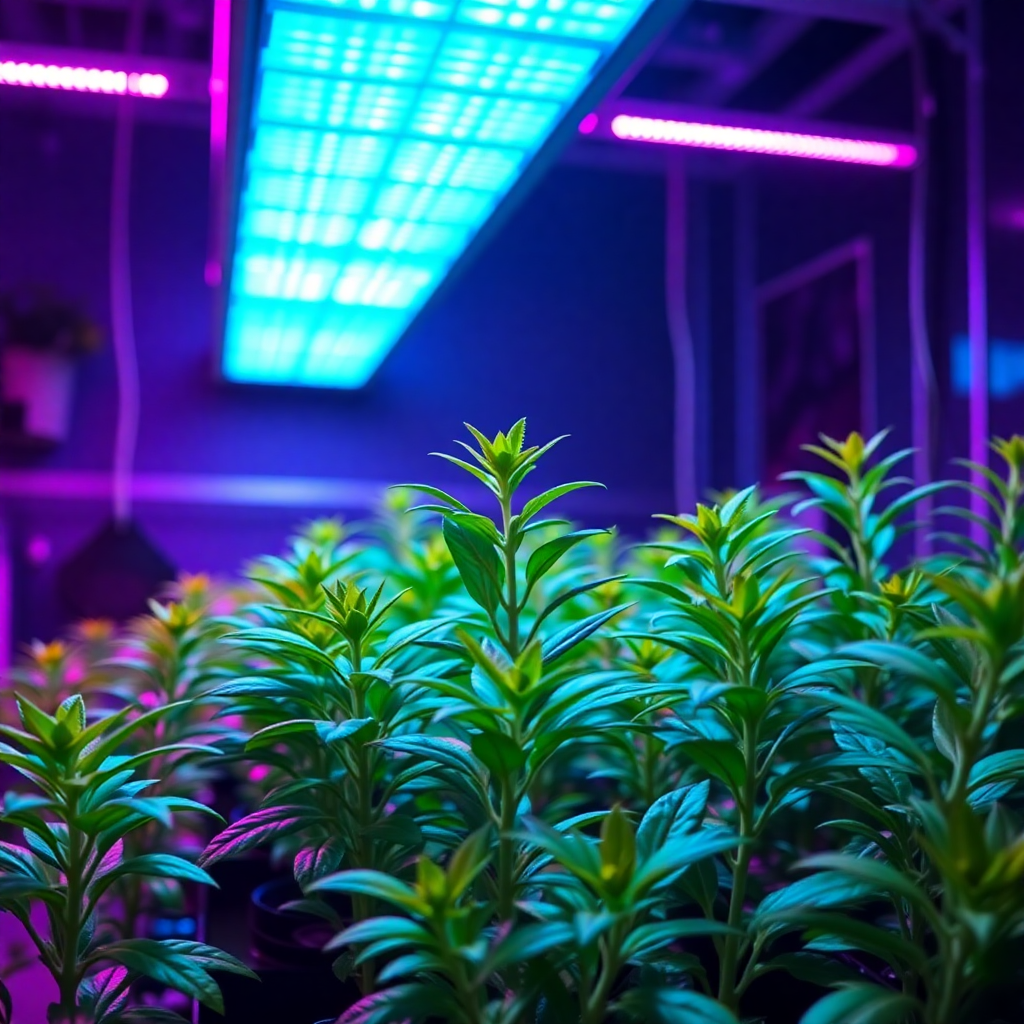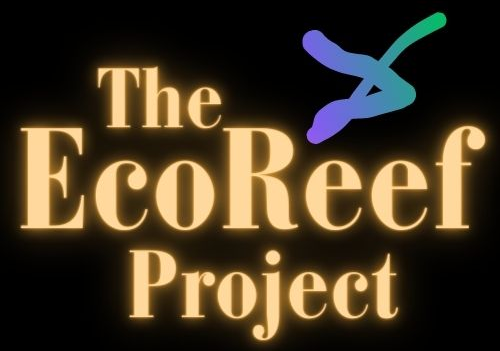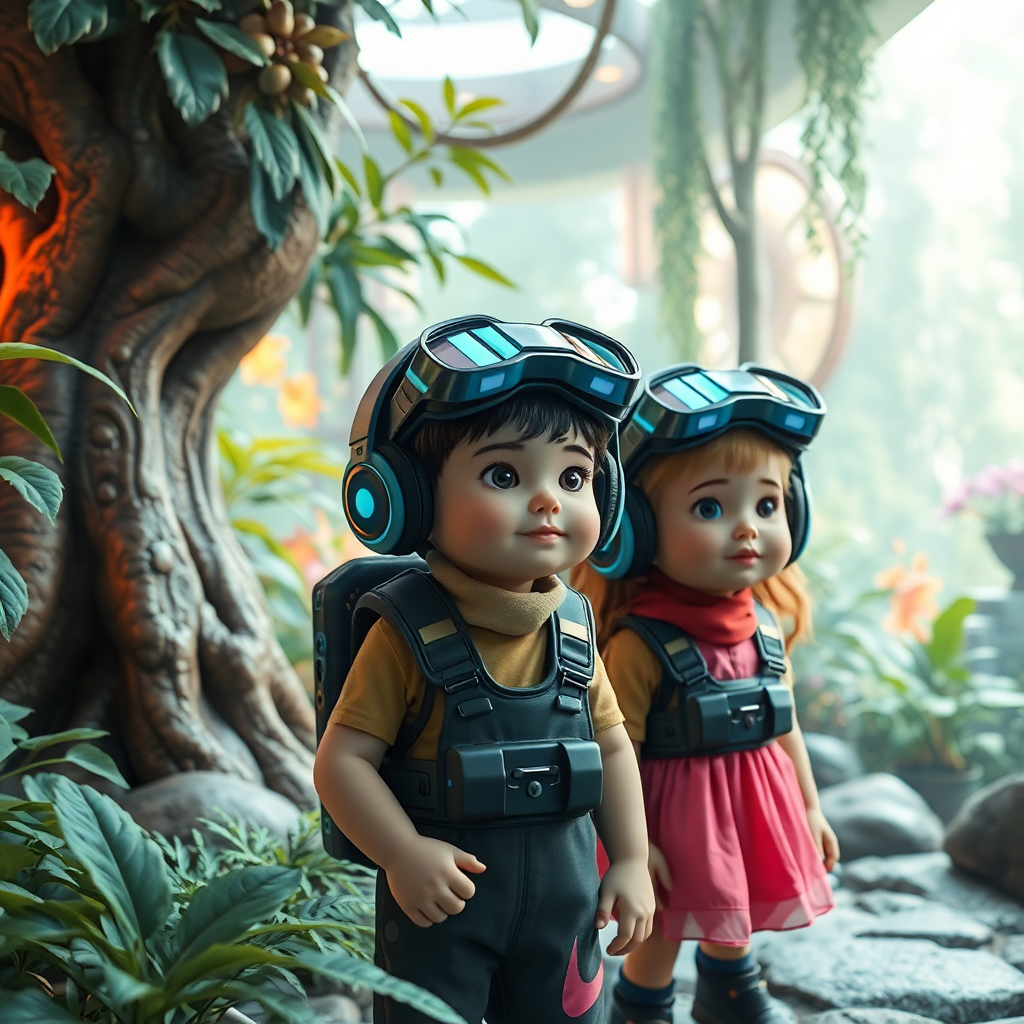Powerful Bright UV Idea For Indoor Gardening

Growing Strong Plants Under UV Lights Strange Innovation
Harnessing UV Lights for Optimal Plant Growth
Ultraviolet (UV) light, though invisible to the human eye, plays an influential role in the growth and development of plants. It is part of the sunlight spectrum and has three subcategories, UVA, UVB, and UVC. While UVC is harmful and not naturally present on Earth due to atmospheric filtering, UVA and UVB contribute positively to plant health in controlled quantities. UV light stimulates the production of certain protective compounds in plants, which can enhance their natural defenses against pests and environmental stressors.
Choosing the Right UV Light for Plants
For optimal growth, it is essential to choose the correct type of UV light. LED grow lights are popular for their ability to simulate sunlight while being energy-efficient. Some models include UVA and UVB spectrums, which can promote healthy leaf and flower development. However, the intensity and duration of UV exposure must be carefully monitored. Excessive UV light can damage plants, leading to leaf burns and stunted growth.

Benefits of UV Light for Indoor Plants
UV light exposure encourages plants to produce higher levels of flavonoids and secondary metabolites. These compounds improve plant flavor, aroma, and nutritional value, making UV lights particularly beneficial for growing herbs, fruits, and certain vegetable crops. Additionally, UV light strengthens plant resilience by activating stress response pathways, which can be advantageous for indoor gardening where natural challenges are limited.
Key Considerations for UV Light Usage
When incorporating UV lights into your indoor garden, prioritize safety for both plants and humans. Use UV-resistant materials for covering sensitive surfaces, and limit direct human exposure to avoid harm. UV lights should be used as a supplement to full-spectrum grow lights rather than as the primary source of light. Rotating plants and adjusting light angles can help distribute UV exposure evenly and prevent hotspots.
Expanding the Spectrum
The Science of UV Supplementation
Beyond UV light, plants benefit from a broader spectrum that includes visible light, infrared, and more. Scientists have found that combining UV light with specific wavelengths from the visible spectrum can enhance photosynthesis and energy capture. This synergistic effect supports not just growth but overall plant vitality, especially for demanding crops like tomatoes and peppers.

UV Lights and Microgreens
A Nutrient-Rich Revolution
Microgreens—tiny vegetable greens harvested early—thrive under UV light supplementation. Research reveals that these tender plants develop richer nutrient profiles and heightened flavors when exposed to UV rays. For home gardeners, UV lights offer a controlled environment to cultivate nutrient-dense greens year-round, making them an ideal addition to urban farming setups.
Environmental Impacts of UV-Based Growing Systems
While UV lights offer advantages, their energy consumption and sustainability are vital considerations. Modern UV grow lights, especially LEDs, are designed to minimize environmental impact, using energy-efficient technology to reduce electricity usage. As indoor gardening grows in popularity, advancements in UV light design continue to focus on sustainability.
Innovations in UV Light Technology
What’s Next?
The future of UV light technology promises exciting innovations for indoor gardening. Developments like UV-tunable grow lights and automated systems for controlling intensity are making their way into consumer markets. These advancements aim to provide precise light management, ensuring plants receive just the right amount of UV exposure without risking damage.
Practical Tips for Beginner UV Gardeners
Starting your UV gardening journey requires careful planning. Position UV lights at the recommended distance from plants to avoid excessive exposure. Begin with short durations and gradually increase based on plant needs. Pay close attention to plant feedback, such as leaf coloration and growth patterns, to fine-tune your setup for optimal results.

Are UV Lights Dangerous for Humans?
Ultraviolet (UV) lights, while beneficial for plants, can pose risks to human health if precautions are not taken. Even UV lights used in indoor gardening can emit rays capable of causing harm if directly exposed to skin or eyes for extended periods. When working with UV light setups, it is crucial to use protective equipment like UV-blocking goggles and clothing, and to minimize direct exposure. Additionally, the areas where UV lights are installed should be designed to prevent accidental contact, such as shielding with UV-resistant materials.
By using UV lights responsibly and understanding their potential hazards, gardeners can protect themselves while enjoying the benefits these lights bring to plant growth.
Exploring UV Light’s Impact on Seed Germination
UV light plays a unique role in seed germination when used appropriately. Studies have shown that controlled doses of UV exposure can stimulate certain biological processes within seeds, enhancing their sprouting potential. Seeds treated with UV light often exhibit increased resistance to fungal infections and improved vigor upon germination. However, it’s essential to avoid prolonged exposure, as excessive UV light may damage delicate seed structures.
UV Lights and Pest Management Strategies
One lesser-known advantage of UV light is its effectiveness in pest control. Ultraviolet exposure disrupts the life cycles of common pests like mites and aphids, reducing their populations naturally. Gardeners can use UV lights to create an environment that is inhospitable for pests while still promoting healthy plant growth. Pairing UV-based pest management with other eco-friendly strategies, such as introducing beneficial insects, can lead to a balanced and sustainable approach to indoor gardening.+

The Economic Perspective
Cost Efficiency of UV Lights
Investing in UV grow lights can be a financially sound decision for indoor gardeners. Modern UV light systems, particularly LED-based models, are designed for durability and energy efficiency, lowering electricity costs over time. Though the initial investment may be higher compared to traditional lighting systems, the long-term savings and increased plant yield can make UV lights a worthwhile addition to an indoor garden. Furthermore, advancements in UV light technology are driving down prices, making them accessible to more home gardeners.
Conclusion
Growing plants under UV lights is a fascinating and rewarding venture, blending technology with nature. With the right balance of UV exposure and proper care, you can enhance plant growth, improve resilience, and elevate the quality of your homegrown produce.
Join the Discussion
Have you tried using UV lights in your indoor garden? What challenges or successes have you encountered?
#UVLight #GardeningTips #IndoorGardening #PlantGrowth #GrowLights #Horticulture #HealthyPlants #Microgreens #EnergyEfficientGardening #UrbanFarming #SustainableGardening #UVSafety #HomeGardening #PlantsUnderUV #BotanicalInnovation #LEDGrowLights #UVGrowLights #GardeningTechnologies #EcoGardening #PlantResilience #Flavonoids #NutrientDensePlants #ModernGardening #SmartGardening #FutureOfGardening #IndoorPlants #UVExposure #GardeningTools #GardeningFacts #GrowYourOwnFood #GardeningSolutions









































